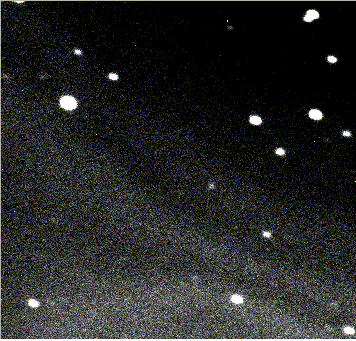
It must have been a slow news day in Russia yesterday (actually – and unfortunately — it wasn’t)… as headlines from one of Russia’s leading news agencies, Ria Novosti, proclaimed, “Russian Astronomers Predict Apophis-Earth Collision in 2036.” But reading the article a little further, the astronomer, Leonid Sokolov of St. Petersburg State University says the chance of a collision in 2036 is extremely slim, which is exactly what NASA’s Near-Earth Object Program has been saying for several years. So, just to be clear, there is no new information or changes in understanding Apophis’ orbit. Here are the facts:
Apophis is expected to make a record-setting — but harmless — close approach to Earth on Friday, April 13, 2029 when it comes no closer than 29,450 km from Earth (18,300 miles). Astronomers have ruled out any possibility of an impact in 2029.
That close pass could alter the asteroid’s orbit for future passes by Earth, but the exact course of the new orbit will depend on exactly how close Apophis comes to Earth in 2029.
That being said, with all the different orbital parameters taken in to account, the probability of Apophis impacting Earth on its following pass in 2036 is about 1 in 250,000, as of the estimates released in October of 2009.

Another encounter by the asteroid with Earth in 2068 currently has a chance of impact at approximately 1 in 333,000.
Like all preliminary estimates, NASA says it is expected that the 2068 encounter will diminish in probability as more information about the 2029 pass by Apophis is acquired.
Initially, when first discovered in 2004, Apophis was thought to have a 2.7 percent chance of impacting Earth in 2029, but as scientists have made better and more detailed observations, they were able to recalculate the path of Apophis, determining that there was no chance it would hit Earth in 2029 and significantly downgrading the odds of it hitting Earth on future passes.
“The refined orbital determination further reinforces that Apophis is an asteroid we can look to as an opportunity for exciting science and not something that should be feared,” said Don Yeomans, manager of the NEO Program Office at JPL. “The public can follow along as we continue to study Apophis and other near-Earth objects by visiting us on our AsteroidWatch Web site and by following us on the @AsteroidWatch Twitter feed.”
Apophis is approximately Its diameter is approximately 270 meters (885 ft), the size of two-and-a-half football fields.

Do the Russians have something editorially comparable to say, ‘The Enquirer’? or other sensationalistic supermarket tabloid?